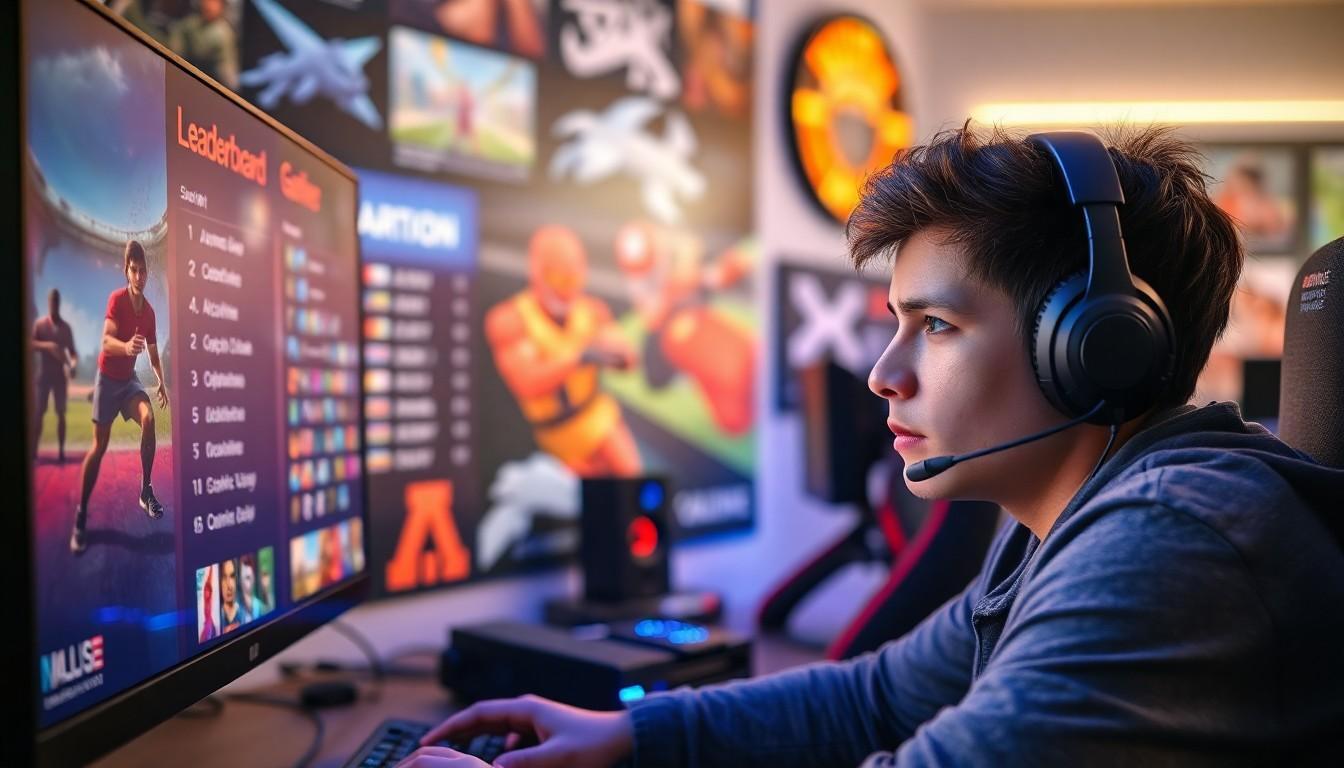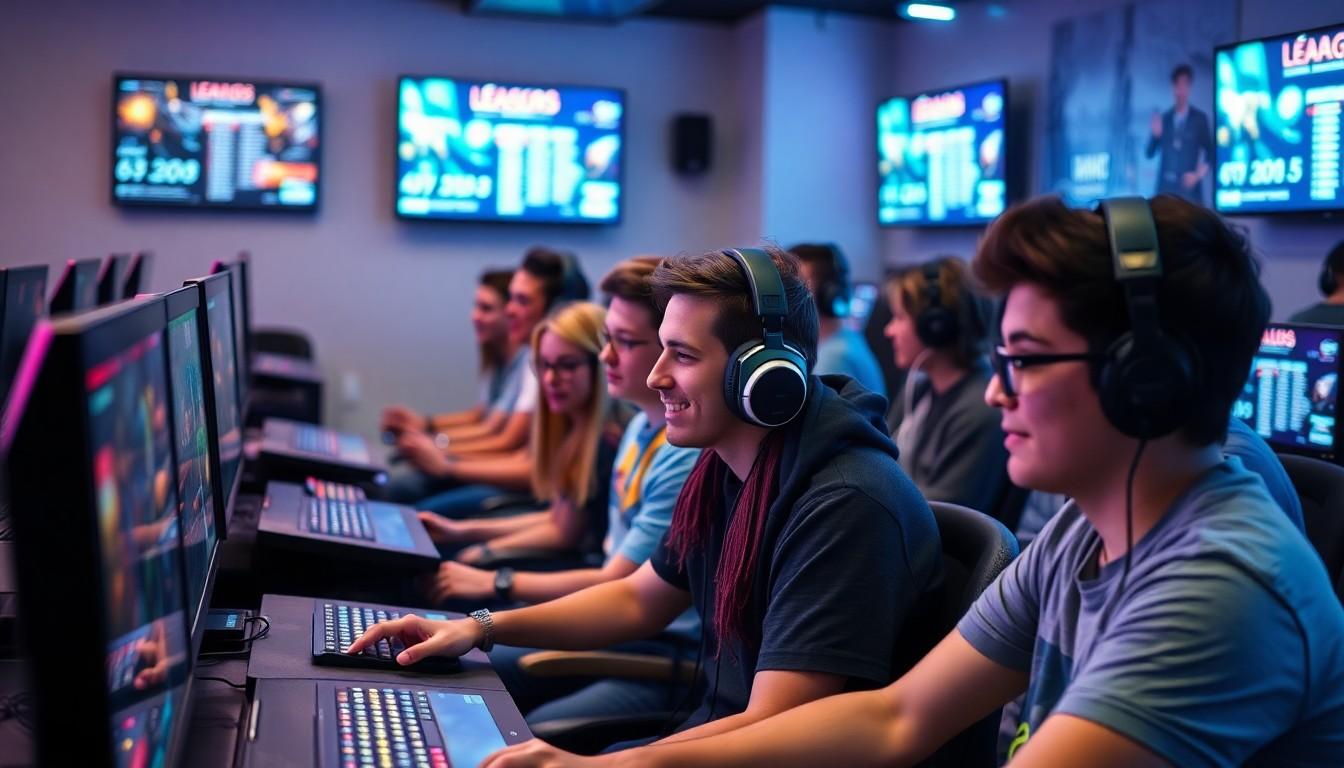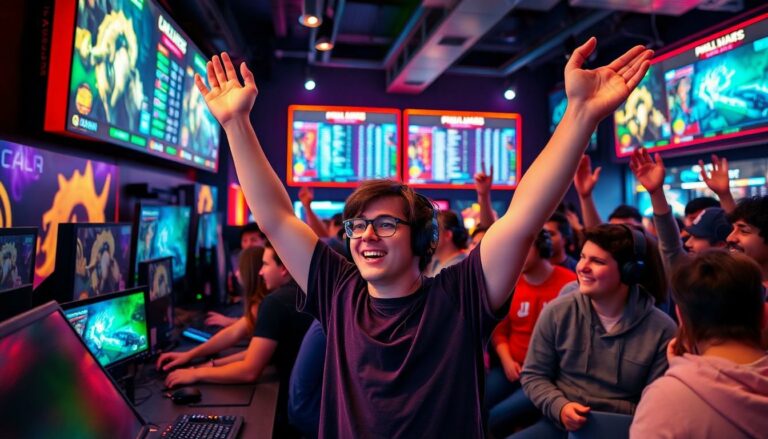In a world where bragging rights reign supreme, games with leaderboards are the ultimate battlegrounds for competitive spirits. Whether it’s racing to the top of a score chart or outsmarting friends in a strategic showdown, these games turn casual play into a thrilling contest. Who wouldn’t want to see their name shining at the top, right next to a few virtual trophies?
Games With Leaderboards
Games with leaderboards showcase competitive play, allowing players to track their performance against others. These rankings often display highest scores, fastest times, or best achievements. Players frequently engage in various genres, such as first-person shooters, racing games, and puzzle titles, each featuring unique leaderboard systems.
The incorporation of leaderboards fosters a sense of community among gamers. Group dynamics emerge as players compare scores and celebrate achievements, enhancing social interaction. Frequent updates to these rankings keep the gameplay experience exciting and encourage players to return regularly.
In competitive environments, players strive for improvement and recognition. Mastery of game mechanics and strategies often leads to higher rankings and coveted placements. Many games also include additional features, like seasonal resets, which maintain engagement by introducing new challenges and rewards.
Different platforms implement leaderboards in diverse ways. Some games may offer global rankings, while others provide regional or friends-only leaderboards. This flexibility allows players to connect with both familiar rivals and new competitors.
As the gaming industry evolves, the importance of leaderboards remains significant. Developers recognize their role in driving player motivation and enhancing the overall gaming experience. Continuous engagement through leaderboards contributes to long-term player retention and satisfaction across multiple gaming titles.
Popular Genres Featuring Leaderboards

Leaderboards enhance competition across various game genres, driving players to improve their skills and strategies. Popular genres with leaderboards include:
Action Games
Action games often feature rapid-paced challenges that reward quick reflexes and precise aims. In first-person shooters, players battle against each other for high scores in modes like team deathmatches and kill streaks. Players strive to outgun opponents, earning ranks based on their performance. Titles like Call of Duty and Apex Legends utilize dynamic leaderboards to reflect changing skills and strategies. Players recognize their achievements through daily or weekly challenges that keep the competition fresh.
Sports Games
Sports games provide virtual arenas where players can engage in realistic simulations. Leaderboards serve as a platform for showcasing player stats in popular games such as FIFA and NBA 2K. Skill and teamwork reflect on the rankings, fostering competitive spirit among players. Players seek to dominate global rankings or local leagues, unlocking rewards for top performance. By participating in seasonal tournaments, players enhance their standings and connect with fellow sports enthusiasts.
Strategy Games
Strategy games demand tactical thinking and meticulous planning, making leaderboards essential for measuring success. Titles like StarCraft II and Civilization VI rank players based on their strategic prowess and in-game decisions. Success depends on resource management, unit deployment, and overall gameplay efficiency. Players follow seasonal updates for fresh challenges, pushing them to refine their strategies. Engaging with the leaderboard creates a sense of community and motivates players to climb the ranks through calculated gameplay.
The Impact Of Leaderboards On Player Engagement
Leaderboards significantly enhance player engagement by deeply instilling competitive spirit and fostering community connections.
Competitive Spirit
Players often thrive in competitive environments. Many view leaderboards as a challenge to push their limits and improve their skills. Ranking high can signal not just mastery of the game but also a recognition from peers. This pursuit can motivate individuals to dedicate more time and effort to gameplay. For instance, in games like Destiny 2, players constantly modify strategies to climb the ranks. The thrill of competing fuels a desire for continuous improvement. Achieving top positions often translates to increased satisfaction, making leaderboards a compelling aspect of gaming that drives repeated play.
Community Building
Leaderboards create a strong sense of community among players. A vibrant atmosphere emerges as players compare scores and cheer each other’s achievements. Engagement becomes more enjoyable when camaraderie develops through shared goals. Global rankings connect gamers from various backgrounds and locations, promoting interaction and collaboration. Games like Fortnite exemplify this aspect, with players frequently discussing strategies and celebrating victories together. Localized leaderboards can also strengthen friendships as players compete with familiar opponents. Ultimately, this social dynamics enhances emotional investment in the game, contributing to long-term player retention.
Tips For Choosing Games With Leaderboards
Consider gameplay variety when selecting games with leaderboards. Different genres offer unique experiences, such as racing games like Mario Kart or puzzle games like Tetris. Look for games that match personal preferences to enhance enjoyment.
Evaluate the ranking system next. Some games feature global leaderboards while others provide friends-only rankings. This choice can significantly affect social interactions and competition levels.
Assess the frequency of updates in the leaderboard. Games that regularly refresh rankings maintain engagement. Frequent updates encourage players to refine techniques and compete more vigorously.
Pay attention to community involvement. Games fostering strong communities enhance the overall experience. Titles that promote cooperation or competition among players, like Fortnite, can lead to more rewarding interactions.
Investigate seasonal events or challenges. Many games introduce temporary events that elevate leaderboard dynamics. These events often motivate players by offering limited-time rewards or unique prizes.
Examine the quality of gameplay mechanics. Rankings often reflect not just scores but also skillful execution. Games with refined mechanics create fair competition, ensuring that skill gets recognized.
Look for reviews and player feedback on leaderboards. Insights from other gamers provide valuable perspectives. Feedback can guide selections toward games that deliver the desired competitive experience.
Lastly, consider the integration of achievements and rewards. Recognizing milestones and awarding trophies increases motivation. Players often appreciate games that celebrate accomplishments both in-game and on leaderboards.
Vibrant Social Atmosphere
Games with leaderboards offer an engaging blend of competition and community. They motivate players to refine their skills while fostering connections through shared goals and achievements. The thrill of climbing the ranks not only enhances the gaming experience but also creates a vibrant social atmosphere.
As players strive for recognition and mastery, leaderboards become a central aspect of gameplay across various genres. With frequent updates and diverse ranking systems, these features ensure that players remain invested and excited. Ultimately, the presence of leaderboards transforms casual gaming into a dynamic and rewarding pursuit, encouraging ongoing participation and enhancing overall satisfaction.




